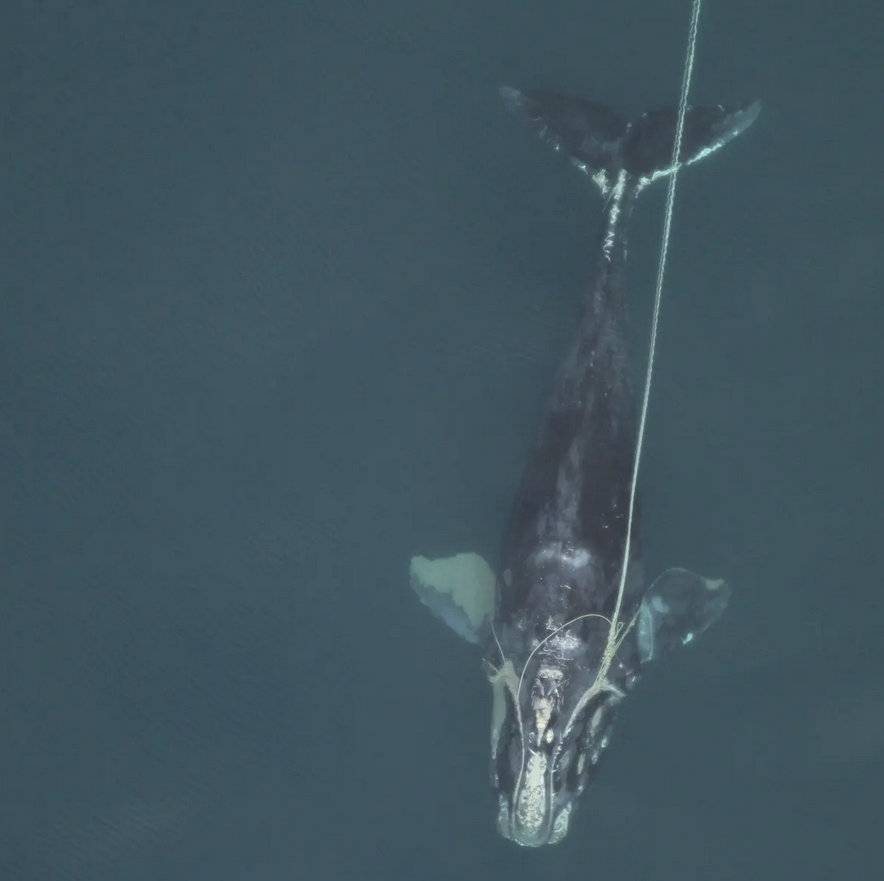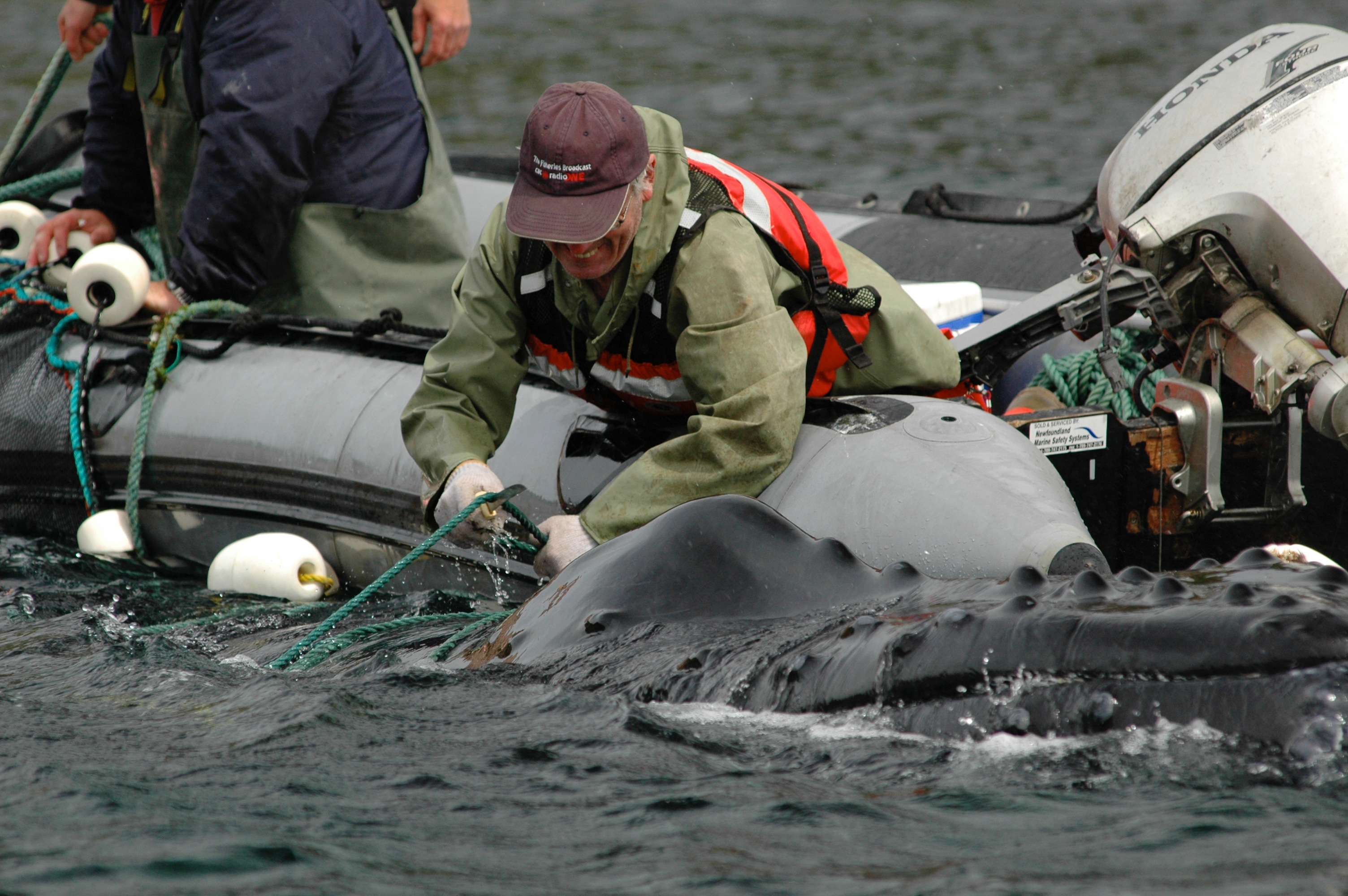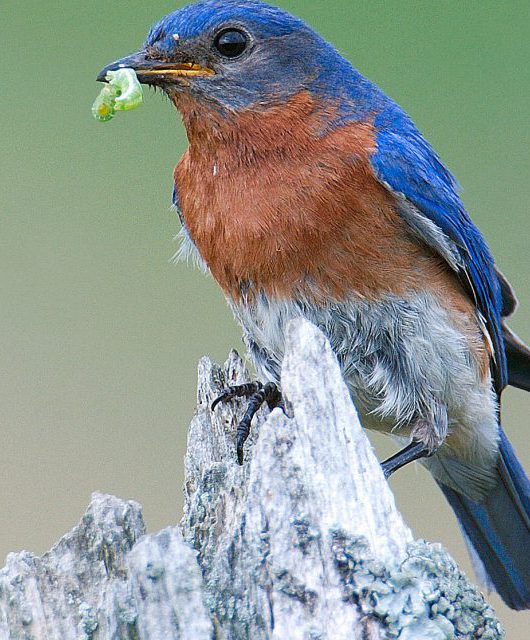How can we stop entanglement?
Some might say that fisheries have not changed much over the years. Fish harvesters go to sea in their boats, set traps or nets, and haul them back with fish and crustaceans in them. But the fact is fishing practices have changed greatly – the boats are larger, the effort put into catching fish is greater, and the strength of the ropes used to haul fishing gear is much higher.
These stronger ropes are of particular concern to marine wildlife that reside in areas where these fisheries take place. These animals don’t know the danger that comes with the fishing lines that they swim among.
“It’s estimated that globally, over 300,000 whales, dolphins and porpoises die every year from entanglement in marine debris and commercial fishing gear – a number that is increasing due to these stronger ropes.”
Entanglements happen when rope wraps around their body, such as around or through their mouth or tangled around their fins and tails. While some animals can break-free from the ropes, others can be anchored to the seafloor in heavy gear, drowning them, others still may experience a slow, painful death. Whales that continue to swim while carrying gear often have difficulty swimming and feeding, leading them to starve, while rope can cut into their tissue causing terrible wounds and disease.

Especially impacted are North Atlantic Right Whales. Nearly 85 per cent of the population, which numbers less than 340 individuals, have been entangled at least once in their lifetime, and over half of all known deaths have been caused by entanglement. The issue is so severe that many whales are considered dead whales swimming – individuals that are so seriously injured that it is only a matter of time before they die.
One such whale was a 12-year-old male nicknamed “Cottontail”. “Cottontail” was first seen severely entangled in October 2020 – he had hundreds of feet of rope trailing behind him that was wrapped around and through his mouth. He spent the next four months travelling thousands of kilometres, starving, until he succumbed to his entanglement and was found dead in February 2021. “Cottontail” is just one example in a long list of other Right Whales with the same death sentence – currently 16 others have been identified, 14 of these are serious entanglements.

One way to combat this outcome is through disentanglement. Disentangling involves a team of highly trained individuals whose goal is to remove gear from an entangled whale to save its life. Unfortunately, while disentangling is a valuable tool, most attempts end in failure. Due to the dangerous nature of this job – approaching a large, highly distressed animal, attempts can only be made during good weather conditions. This sometimes means that we lose sight of the whale’s location before a team can be on the water. Once with the whale, often the configuration of the gear is too complex to fully remove. Take Cottontail for example, disentanglers were able to remove around 90ft of rope, but the configuration of the entanglement was too complex, and it wasn’t enough to save his life.
So, what else can be done?
The best way to eliminate the threat of entanglement is to remove rope from the waters where whales feed and socialize. The Canadian Wildlife Federation, in partnership with commercial fish harvesters, are testing innovative technologies that allow fishing to occur without leaving ropes in the water. By using “on-demand fishing gear”, where buoy lines are held at the seafloor until the fish harvester wants to retrieve his catch, the threat is removed from the environment of the whales and the fish harvesters are still able to maintain their livelihood. It’s a win-win!
By Elizabeth Vézina and Alexandra Cole




2 comments
Fishing ropes,cords etc., need to be used more carefully & not left in the ocean or rivers to end these tragic deaths .
We couldn’t agree more!